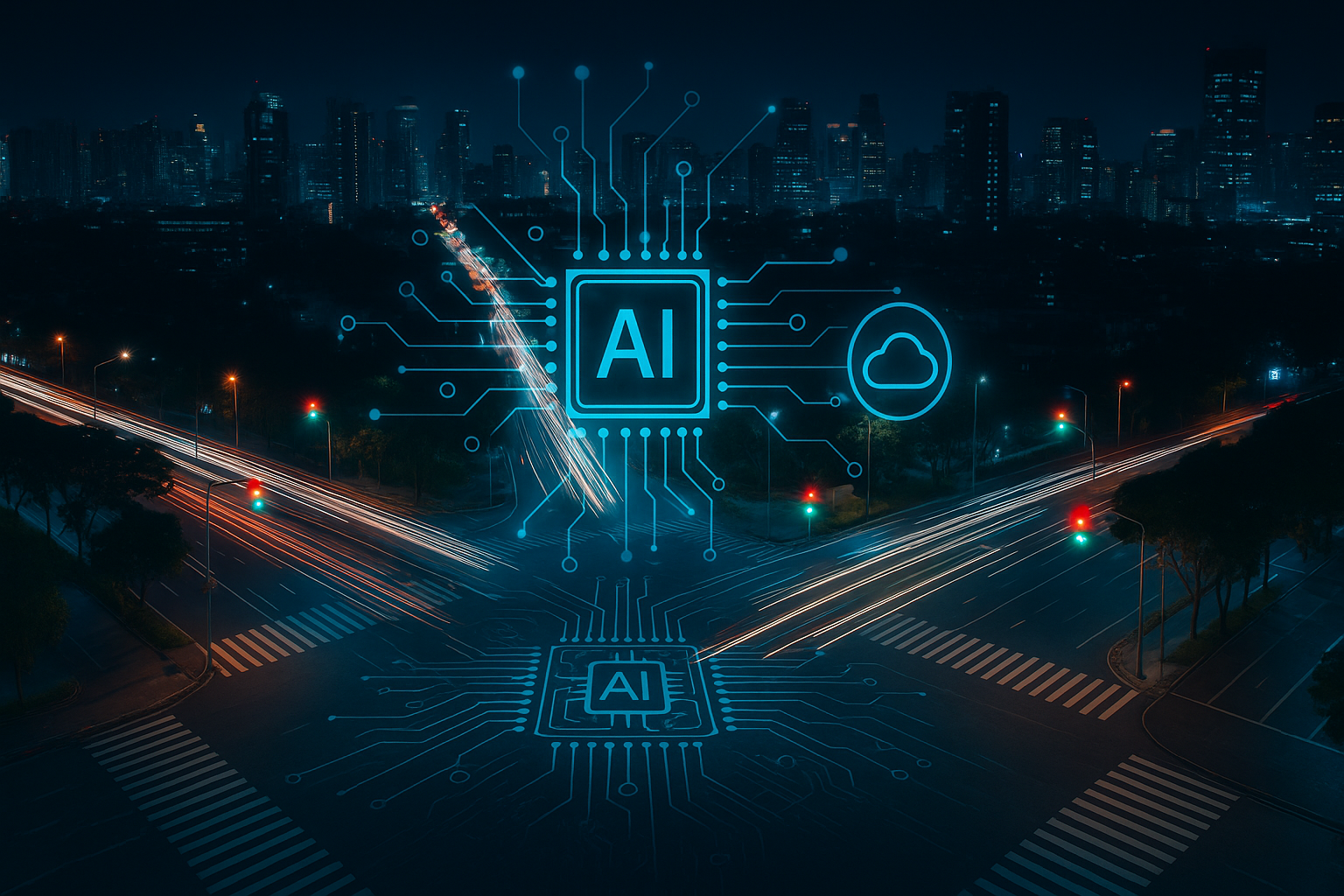Why Adaptive Traffic Signal Control Is the Lever
Legacy systems assume predictable flow—reality disagrees. Rainstorms, incidents, construction, peak-hour surges, public holidays, school dismissals, and sporting events all break fixed cycles. Adaptive traffic signal control replaces rigid timing with continuous optimization informed by real-time traffic analysis. In practice, AI-controlled traffic lights measure current conditions and adjust before queues become bottlenecks. The benefit is twofold: 1) a smoother experience for drivers and freight, and 2) measurable savings that make the business case for city leaders and investors considering smart city traffic solutions.
Why Invest in AI for Traffic Management (ITS)?
For city planners, investors, and executives, the goal is not simply to move vehicles but to unlock productivity. Traffic management in smart cities must align capital spending with outcomes such as reducing logistics costs, increasing network resilience, and supporting equitable access. An artificial intelligence traffic control system does this by pushing intelligence to the edge at intersections while coordinating strategy centrally. That combination accelerates time-to-value and protects long-term budgets because software upgrades unlock new capability without tearing up roads. In other words, the future of intelligent transportation systems is software-defined and AI-guide
How Can AI Reduce Traffic Congestion?
1. Data collection from sensors and IoT smart traffic light
Modern deployments blend cameras, traffic light sensors, and IoT smart traffic lights to create a live picture of demand. A traffic signal video detection system interprets continuous streams, classifying vehicles, estimating queue lengths, and reading speed distributions. Legacy loop sensor traffic light and underground traffic light sensors can be incorporated where present, but computer vision (AI image recognition) and IoT add richer features and faster refresh.
2. Machine learning analysis and density-based decisions
Incoming data flows into ML models tuned for the city’s corridors. The system runs density-based traffic light control to prioritize overloaded approaches, detect spillback risk, and compute optimal signal phases and offsets. The objective function can be tuned for different goals—e.g., freight priority near ports or transit priority near BRT corridors.
3. Dynamic action from AI-controlled traffic lights
With real-time traffic analysis, the system does not wait for queues to explode. It schedules proactive changes minutes ahead of surges, using predictive modeling and reinforcement learning to minimize delay. Cycles update continuously within safe engineering constraints, maximizing throughput and stabilizing the network.
Quantified Business Benefits
Adoption of AI-based traffic control systems consistently delivers tangible improvements:
- Fleet fuel efficiency improves with a 15.6–20% reduction in fuel use as vehicles idle less and maintain steadier speeds.
- Improving on-time delivery follows a 27–39% reduction in average intersection wait time, stabilizing schedules and reducing buffer costs.
- Travel time reliability gains of 10%+ on average reduce risk premiums in logistics planning and improve customer satisfaction.
- Lowering vehicle maintenance costs results from fewer stop-start cycles, easing stress on brakes, transmissions, and engines.
- Environmental co-benefits arrive as lower fuel burn leads to measurable CO₂ reductions, aligning with ESG reporting and municipal climate goals.
Why commsult Is the Right Partner
Deploying a city-scale artificial intelligence traffic control system is not just a hardware exercise. It demands ML model engineering, secure API integration with existing controllers, reliable data pipelines, and a robust cloud-edge architecture. Commsult focuses on the intelligence layer so your smart transport systems remain adaptive, scalable, and resilient. We engineer the models, harden the backend, and coordinate change management so operations teams can trust the outcome from day one.
Implementation Guidance
Start where congestion is costly and public value is highest. Connect a pilot corridor of signalized intersections with a mix of commuter and freight movements. Instrument it with cameras and traffic light sensors, integrate controllers, and define the optimization objective in business terms. Measure baseline queues, delay, and fuel consumption. Then go live and track KPIs weekly. The payback period is often measured in months, not years, because savings accrue immediately through reduced delay and idling.
A Smart City Traffic Solution That Compels Action
Indonesia’s logistics competitiveness depends on smarter control, not just more concrete. With AI in traffic control, cities convert intersections into adaptive assets that pay for themselves through efficiency. The path is clear: adopt AI-controlled traffic lights as part of intelligent transportation systems (ITS), and scale the smart traffic light system citywide. For planners, investors, and operators seeking durable gains, artificial intelligence in traffic management is the fastest route to unlocking billions in productivity and elevating urban quality of life. Connect with commsult to map an actionable roadmap and make your first corridor the proof point that moves the city.
